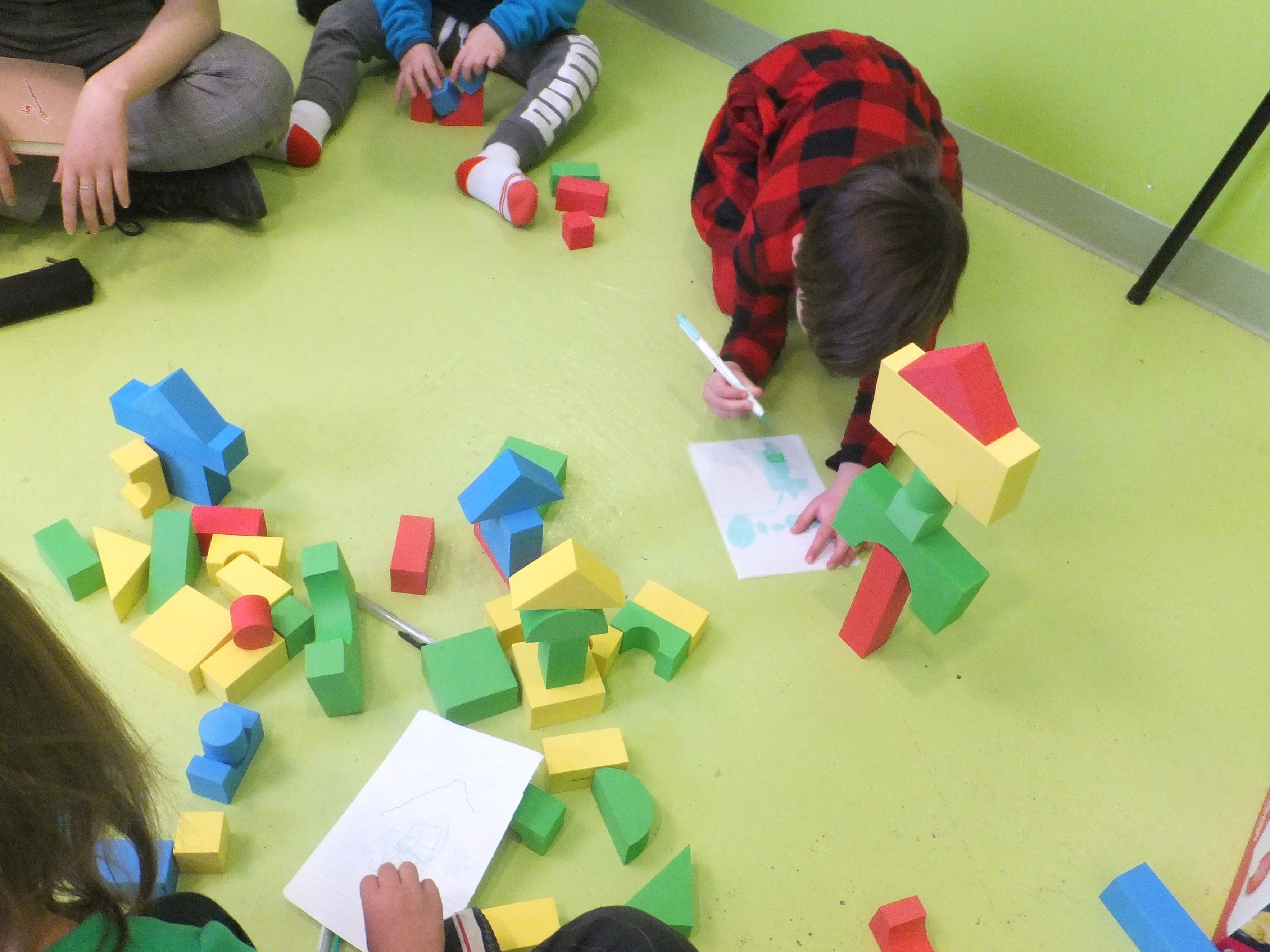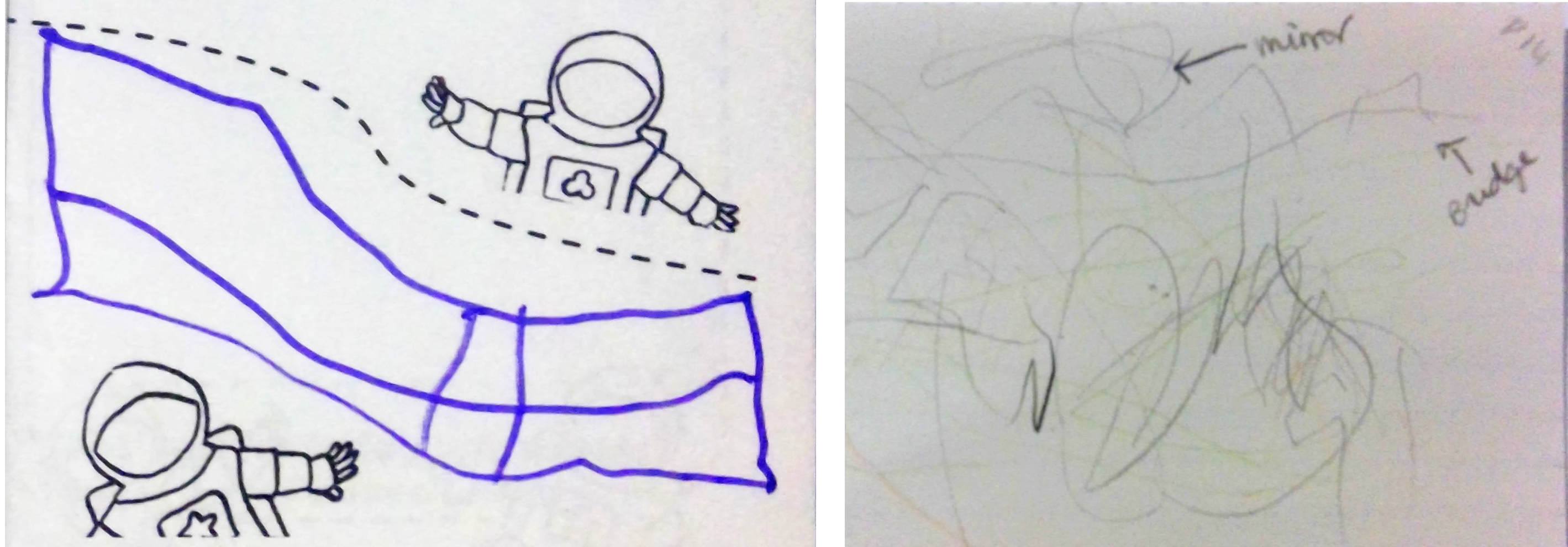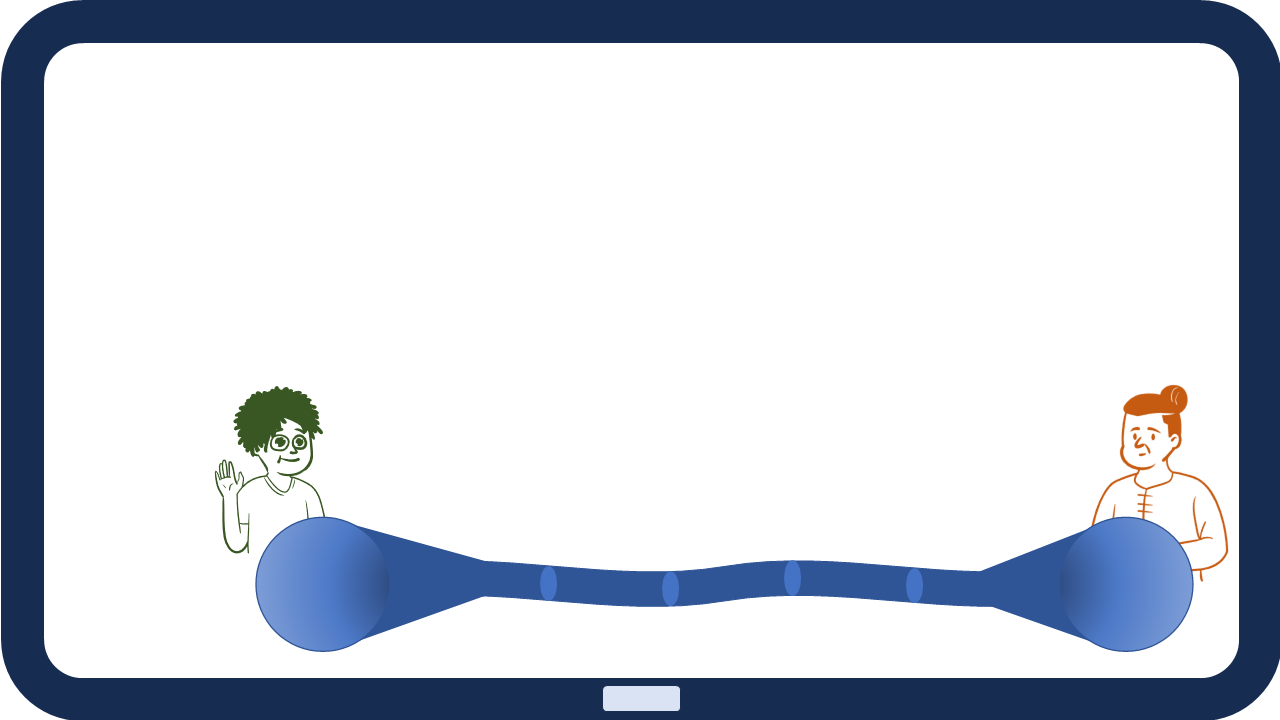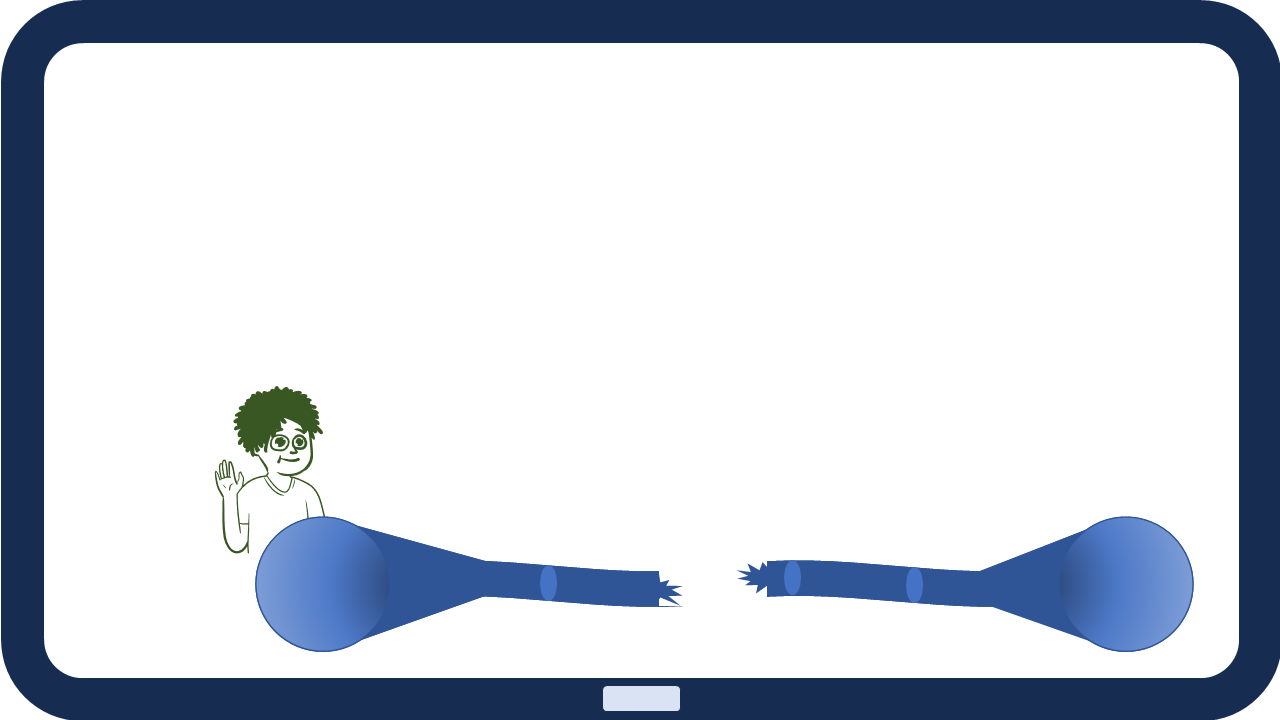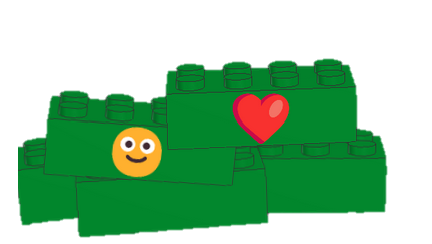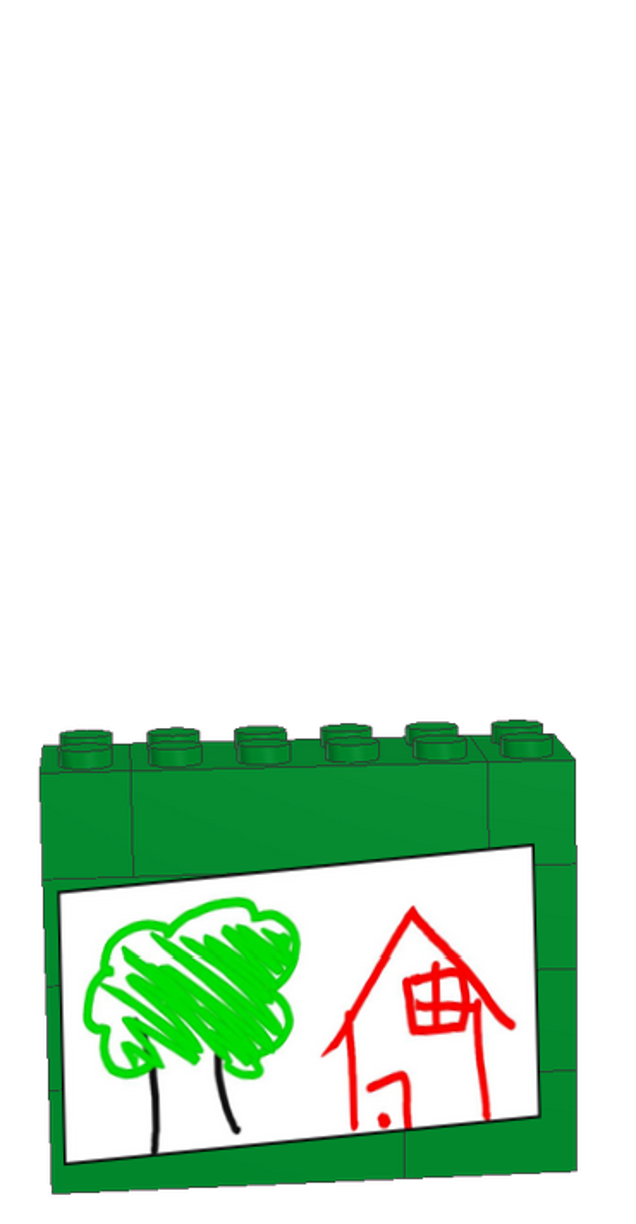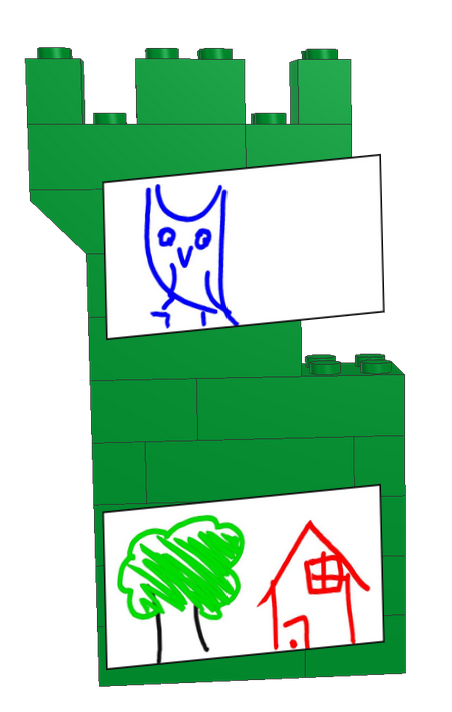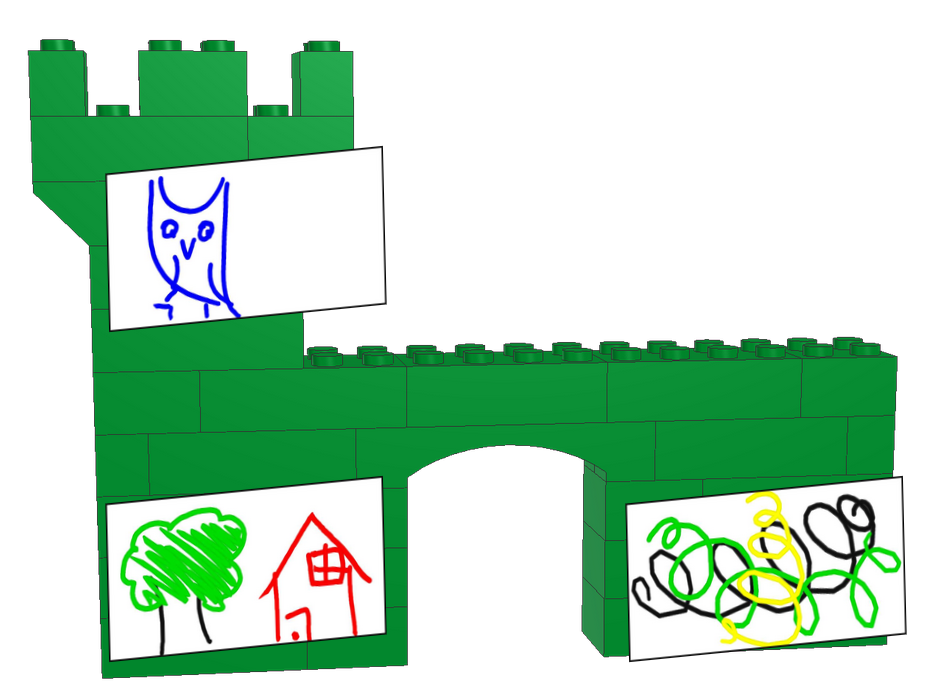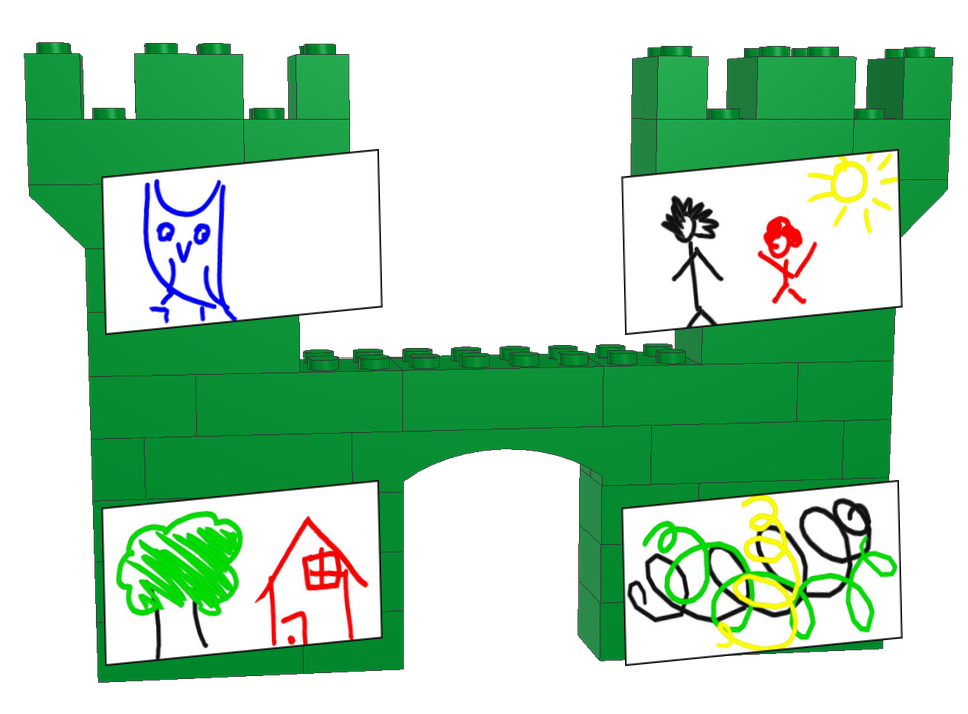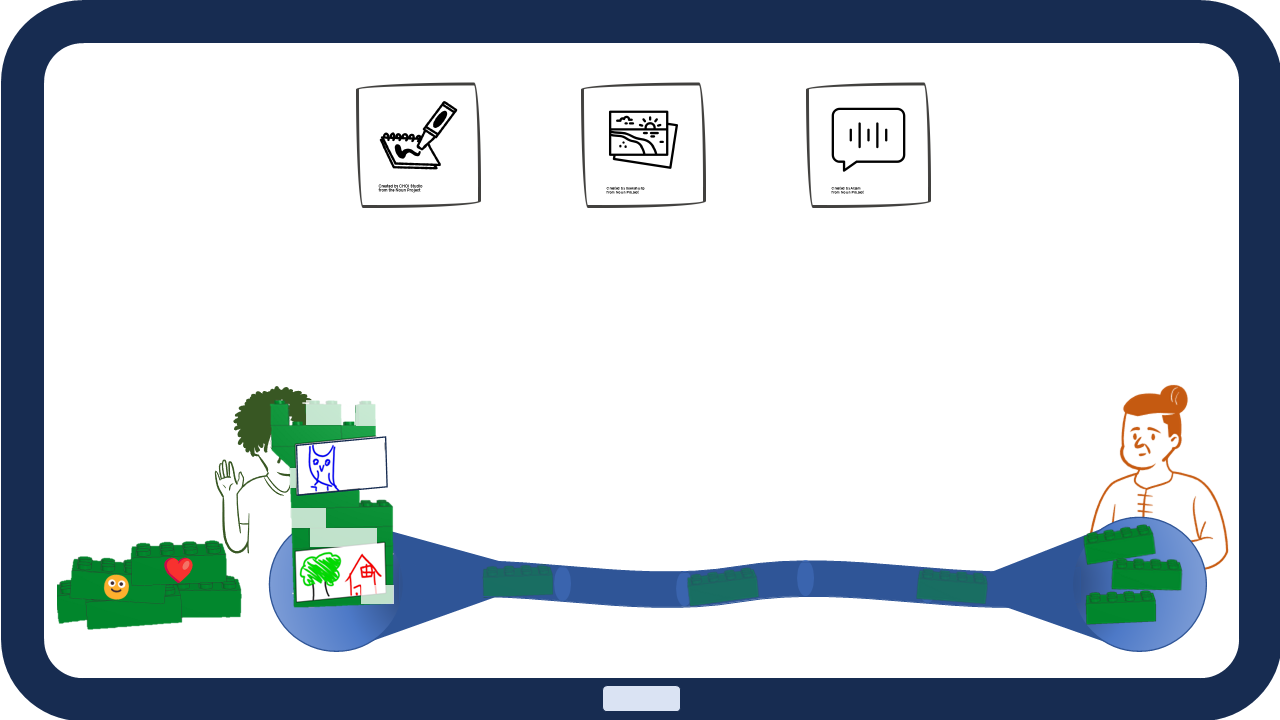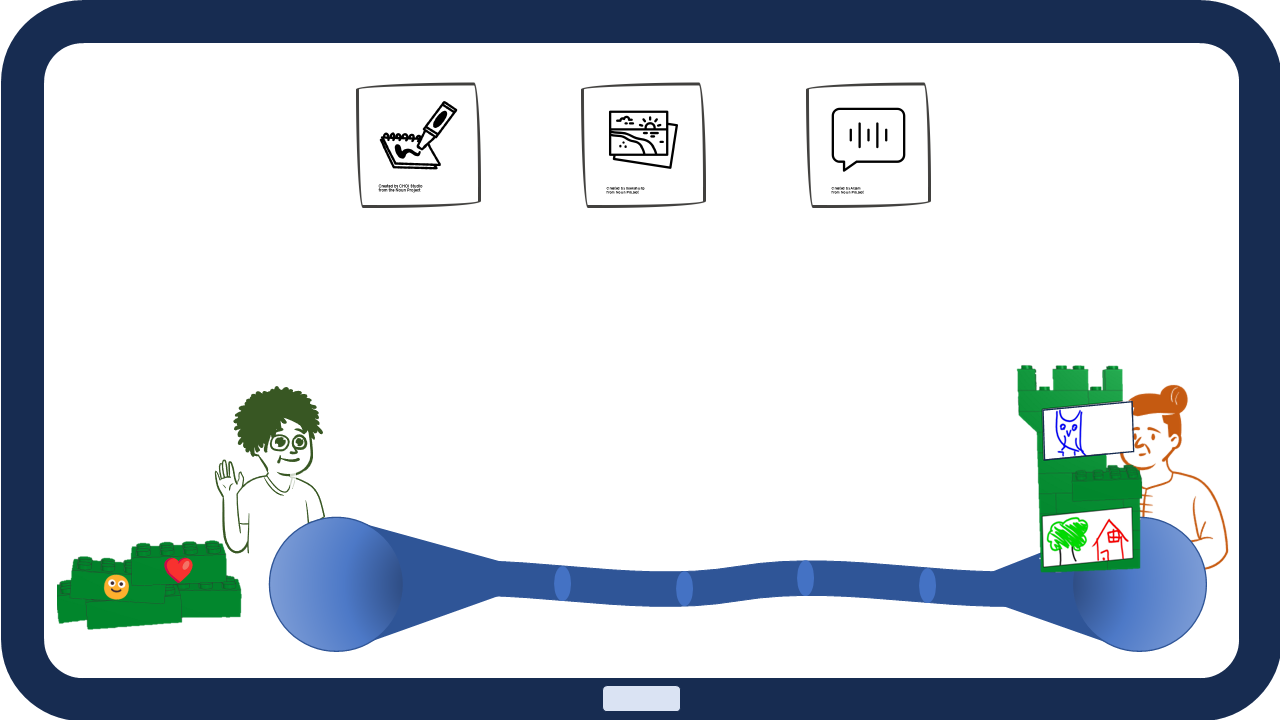.
Working with young kids, I designed for family connections that cross generations
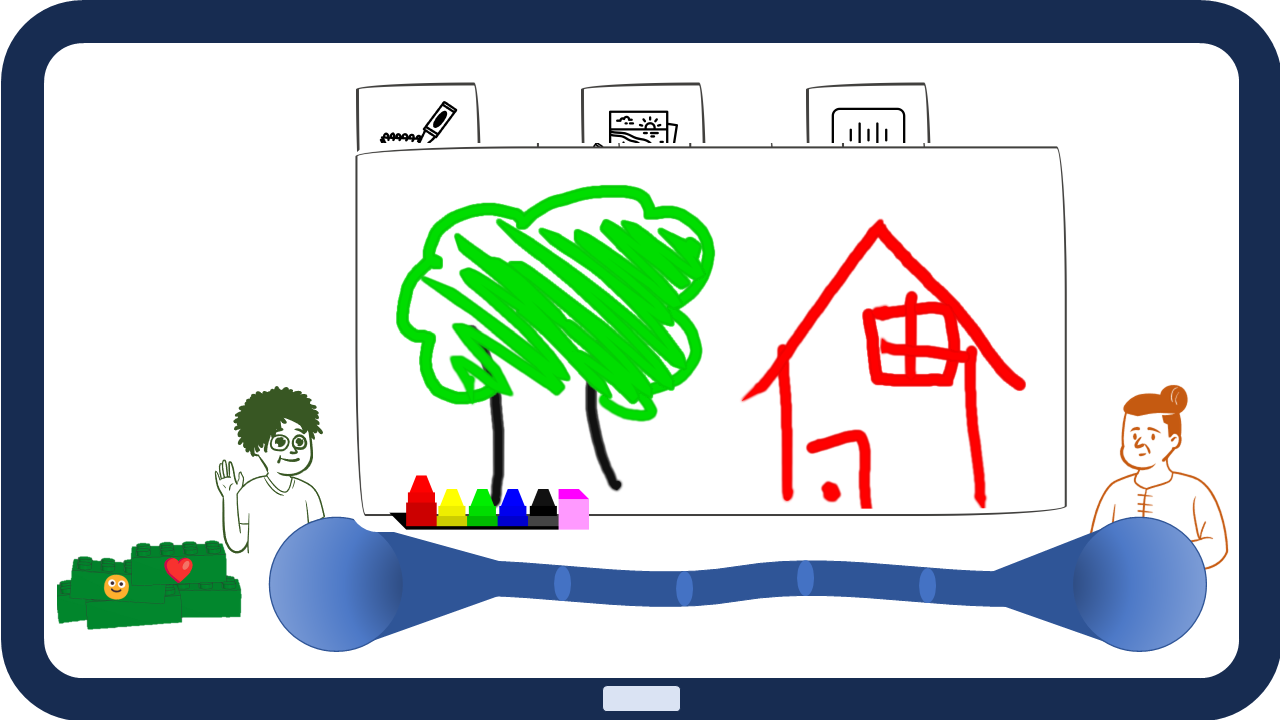
Challenge
Young children want to independently connect with family. And in-person they can do this easily through play, storytelling, and simple conversation. But when we're apart that's not so easy for them. With this design, I worked with young children (3-5 years old) directly to get their own design ideas for their own communication. From those ideas I designed this family communications app.
To design with young kids, I focused on the playful aspect of design and made a co-design game about astronauts communicating across space. I designed from those kids' ideas for their "gadgets" and created a communications tool based in their needs and priorities as users.
Keeping Devices Connected
My first instinct was to consider what types of media to include in messaging. But from the young kid's descriptions of their designs, I learned that it's more important for them to know that their device is connected to the other family member's device first. They wouldn't even describe making a message until they had described the connection. That way they know their message can be sent and received.
They often described this connection as a bridge or a tunnel that the message can travel on or through. My design reflects that with a tunnel connecting two user avatars. Each user can design their avatar to look like them. To show the status of the connection, when one of them is offline that avatar disappears and the tunnel/connection is broken.
Building a Message
Now I could consider what types of media could be in a message. I stuck with ones that don't need any literacy skills and are already familiar: drawing, photos, and voice notes. And this matched what the kids came up with (along with less feasible options like smells).
A message doesn't have to be just one thing; like just one drawing. Different pieces can go together to make a message. I wanted a fun way to show how these different pieces are part of one whole message, and since the kids often used building blocks to build a message out of different blocks, I started with a pile of blocks next to the user's avatar. These blocks also help me show how the messages send back and forth, but more on that in a moment.
Each part of a message (a drawing, a voice note, or a photo) takes some of those blocks and becomes part of a block tower (or a block spaceship, or a block horse...)
And there's a block message ready to go!
Blending STEM Learning into Sending
In the young kids' designs, messages traveled along the connection between devices, and a lot of them described this using metaphors that sound a lot like how wireless transmission actually works. Like evaporation (digital file broken into smaller packets and put back together when it arrives) or a series of mirrors (moving a digital file from one network to another to get between devices).
I wanted to build these STEM metaphors into the design and add a chance for users to learn more about how our technology actually works. And this is where the blocks come in again: I can visualize how a digital message is transmitted by packets with each block representing a packet.
So to send a message, with however many parts, you drag your tower to your end of the connection. Then watch it travel block by block (packet by packet) to the other side.
On the other end, the user sees the block tower arriving block by block and then can see the different parts once every packet has arrived.
Time for Phatic Fun
The last piece was to add some fun little interactions for phatic gestures (like saying hi, how are you, I love you).
I designed two different ways to connect with those small gestures. First with the avatars. Tapping your own avatar cycles through a few different positions, and that is synced with the other side, so they can see you "moving" with your avatar.
The other phatic gesture uses the pile of loose blocks waiting to become a larger message. Some of these have a single emoji on them (like a heart and a smiley). Dragging one of these blocks to your end of the tunnel sends a heart block to the other user. This is a single piece of data (a single emoji) so it works with the packet metaphor too! There's no need to break down a single character to send it, so it sends as is.
And with that, I have a simple tool for family messaging for all ages and without literacy.
